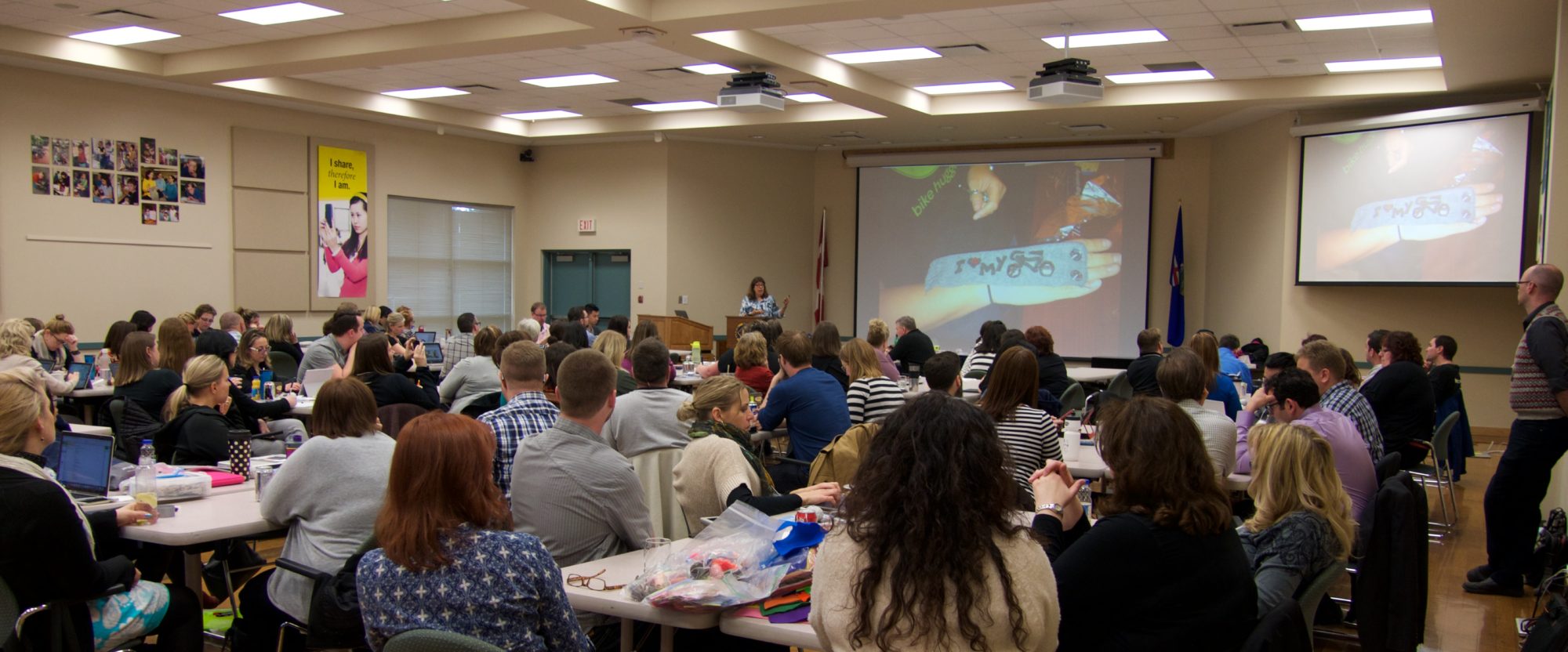 How many times have you heard that kids are “digital natives” and adults are “digital immigrants”. That adults will never “get” technology like the kids do, because their brains are actually wired differently, and as digital immigrants, we will always “speak with an accent” — we can’t really see what they see.
How many times have you heard that kids are “digital natives” and adults are “digital immigrants”. That adults will never “get” technology like the kids do, because their brains are actually wired differently, and as digital immigrants, we will always “speak with an accent” — we can’t really see what they see.
This catchy turn of phrase seems to completely capture the ease with which kids accept technology that baffles adults. However, it creates a number of traps in its use. We don’t want to pretend that jargon is a guiding principle for education.
It’s attributed to Marc Prensky, but even he says the concept was around before he made it popular.
Calling students “digital natives” is an excuse for not actually teaching them about technology. Even if we accept that many students are more facile and less intimidated by technology that many adults, it doesn’t mean they know anything.
Digital natives they may be, but they still need teachers and parents. Kids need adults to guide them to use these tools wisely and for appropriate academic purposes. A teacher can take them further and to a place with real meaning. Parents can model values. Kids are less afraid of technology, and don’t usually worry about breaking things, but this doesn’t translate to intellectual curiousity or comprehending boundaries. They are just used to having technology around, but also more than willing to just ignore it when it isn’t immediately obvious what to do with it.
If we walk away from our responsibility to teach them about appropriate, academic uses of technology, it’s our fault when silly, or worse, inappropriate uses of technology fill that vacuum.
And we should go further than just helping them use technology. They should know why we think it’s important. By giving students a role in helping out, and insight into how decisions are made to use technology in education, we give them the excitement of discovery and empower them to think beyond themselves and their own enjoyment of the moment. We have to share the “whys” of educational technology with them.
And just like “digital native” is an easy label, “digital immigrant” creates the same problem in reverse by providing a convenient excuse for teachers who don’t want to learn something new. I have all the sympathy in the world for teachers who are overburdened, and who patiently listen to all the hype that never pans out. But it’s time to accept that the world has changed.
No one is saying that fundamentals aren’t important, or that critical thinking and reading and math aren’t required for today’s world. But technology makes those things accessible to students who might have been left behind before. Blogs allow shy students to have a voice in a class discussion. Or allow a student who is not even physically in the classroom to participate. Wikis represent the technology of democracy. It’s everything we try to teach students about collaboration and teamwork. Getting these tools up and running is important, using them even more so.
Creating labels like native and immigrant only solidify boundaries and create implied adversaries. It’s simply the wrong mental picture for a collaborative learning environment where teachers and students are all lifelong learners.
Other conversations:
- A collection of links questioning the digital native/immigrant issue is collected on Bill Kerr’s wiki – Learning Evolves.
- Check out Gary Stager on the teacher side: On Tech Insurgents: Do Your Teachers Need a computing IEP?
- One of the most commented on forums in Classroom 2.0 recently was: Are they really digital natives? started by Amy Capelle.
- Henry Jenkins Reconsidering Digital Immigrants


 Like going to educational conferences? I do. Meeting new and old friends, learning cool things, and being inspired is revitalizing. But it’s not something I want to do every day! Airplanes, leaving home, work piling up, big crowds, and jet lag can make you wonder if it’s all worth it.So here comes some web 2.0 savvy educators with a great idea. Can’t we have it all? Can’t we share, collaborate, and be inspired without the TSA being involved? Can I participate in a way that’s easy for me, comfortable for me, and convenient for me? Oh, and did I mention… FREE?
Like going to educational conferences? I do. Meeting new and old friends, learning cool things, and being inspired is revitalizing. But it’s not something I want to do every day! Airplanes, leaving home, work piling up, big crowds, and jet lag can make you wonder if it’s all worth it.So here comes some web 2.0 savvy educators with a great idea. Can’t we have it all? Can’t we share, collaborate, and be inspired without the TSA being involved? Can I participate in a way that’s easy for me, comfortable for me, and convenient for me? Oh, and did I mention… FREE?
 OK, so that’s a lot of money and game players. What does this have to do with educational games?
OK, so that’s a lot of money and game players. What does this have to do with educational games?